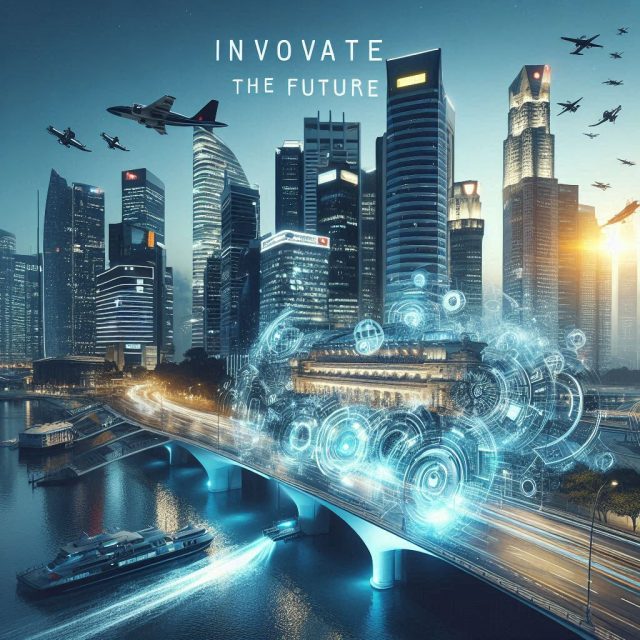In an era marked by rapid technological advancements, the phrase “Innovate the future: technology transforms dreams into reality every day” has never been more relevant. Technology has become the driving force behind many of the significant changes shaping our world today. From the way we communicate to how we work, travel, and even think, technology has fundamentally altered our daily lives and continues to push the boundaries of what is possible. This exploration delves into the transformative power of technology and how it turns aspirations and dreams into tangible realities, shaping the future in profound ways.
The Evolution of Technology and Its Impact
The journey of technological evolution is a testament to human ingenuity and creativity. From the invention of the wheel to the development of the internet, each technological breakthrough has revolutionized society and expanded the scope of human capabilities. Historically, innovations such as the steam engine, electricity, and the telephone redefined how people lived and worked, leading to unprecedented levels of productivity and connectivity.
In the contemporary context, technology continues to drive change at an accelerated pace. The advent of digital technology, including computers, smartphones, and the internet, has created new possibilities for individuals and businesses alike. These advancements have enabled real-time communication across the globe, revolutionized industries, and transformed everyday experiences.
One of the most profound impacts of technology is its ability to bridge distances and connect people. Social media platforms, video conferencing tools, and instant messaging applications have made it possible for individuals to stay connected with friends, family, and colleagues regardless of geographical barriers. This connectivity has not only fostered relationships but has also facilitated global collaboration and knowledge sharing.
Technology: Turning Dreams into Reality, One Innovation at a Time.
Technology as a Catalyst for Innovation
Innovation is at the heart of technological advancement. It involves the creation of new ideas, products, or methods that solve problems or improve existing solutions. Technology acts as a catalyst for innovation by providing the tools and platforms necessary for experimentation and development. This synergy between technology and innovation is evident in various fields, from healthcare and education to entertainment and transportation.
Healthcare: In the medical field, technology has led to groundbreaking innovations that have transformed patient care. For example, advancements in medical imaging, such as MRI and CT scans, have revolutionized diagnostics, allowing for earlier and more accurate detection of diseases. Telemedicine, which leverages digital platforms to provide remote consultations and treatments, has expanded access to healthcare services, particularly in underserved areas.
Education: Technology has also revolutionized education by making learning more accessible and engaging. Online learning platforms, interactive digital textbooks, and educational apps have democratized access to knowledge, enabling students to learn at their own pace and from any location. Virtual and augmented reality technologies are further enhancing the learning experience by providing immersive and interactive simulations.
Entertainment: The entertainment industry has been transformed by technological innovations, such as streaming services, virtual reality, and advanced gaming systems. These technologies have changed how people consume media and experience entertainment, offering personalized and interactive options that were previously unimaginable.
Transportation: In transportation, technology has led to the development of autonomous vehicles, electric cars, and smart transportation systems. These innovations promise to enhance safety, reduce environmental impact, and improve the efficiency of travel. For instance, ride-sharing apps and navigation systems have revolutionized urban mobility, making transportation more convenient and accessible.
The Role of Artificial Intelligence and Machine Learning
Artificial Intelligence (AI) and Machine Learning (ML) are two of the most transformative technologies of the modern era. AI refers to the simulation of human intelligence in machines, enabling them to perform tasks that typically require human cognition, such as problem-solving, decision-making, and pattern recognition. ML, a subset of AI, involves training algorithms to learn from data and improve their performance over time.
The impact of AI and ML on various industries is profound. In finance, AI-powered algorithms are used for fraud detection, risk assessment, and personalized financial services. In retail, AI-driven recommendation engines enhance the shopping experience by providing personalized product suggestions based on consumer behavior.
Healthcare is another area where AI and ML are making significant strides. Predictive analytics, powered by AI, can identify potential health risks and suggest preventive measures. ML algorithms are also being used to analyze medical data, such as genetic information, to develop personalized treatment plans and drug therapies.
The integration of AI and ML into everyday applications has led to the development of virtual assistants, smart home devices, and autonomous systems. These technologies are not only enhancing convenience but are also enabling new levels of efficiency and productivity.
Where Innovation Meets Reality: Technology Makes Dreams Possible.
The Future of Technology and Its Implications
As we look to the future, the potential for technology to continue transforming dreams into reality is boundless. Emerging technologies, such as quantum computing, biotechnology, and blockchain, promise to drive further innovation and change.
Quantum Computing: Quantum computing represents a significant leap forward in computational power. Unlike classical computers, which use binary code (0s and 1s), quantum computers leverage the principles of quantum mechanics to process information in ways that are exponentially faster and more efficient. This has the potential to solve complex problems that are currently beyond the reach of traditional computing.
Biotechnology: Biotechnology is revolutionizing fields such as agriculture, medicine, and environmental conservation. Advances in genetic engineering, synthetic biology, and regenerative medicine are enabling new approaches to addressing global challenges, from food security to disease treatment and environmental sustainability.
Blockchain: Blockchain technology, best known for its application in cryptocurrencies, has far-reaching implications beyond digital currencies. Its decentralized and secure nature can enhance transparency and trust in various sectors, including supply chain management, voting systems, and financial transactions.
The rapid pace of technological advancement also raises important questions and challenges. Ethical considerations, such as privacy, security, and the impact of automation on employment, must be addressed to ensure that technology serves the greater good. As technology continues to evolve, it is crucial to balance innovation with responsible practices and policies that safeguard individual rights and promote equitable access to technological benefits.
Conclusion
“Innovate the future: technology transforms dreams into reality every day” encapsulates the essence of how technology influences and shapes our world. The continuous evolution of technology has opened up new possibilities and opportunities, turning once-unimaginable dreams into practical realities. From enhancing communication and connectivity to revolutionizing industries and driving innovation, technology plays a central role in shaping the future.
As we move forward, it is essential to embrace the potential of technology while also addressing the challenges it presents. By fostering a culture of innovation, ethical responsibility, and collaboration, we can harness the transformative power of technology to create a future that reflects our collective aspirations and values. The journey of technological advancement is ongoing, and its impact on our lives will continue to unfold in exciting and unexpected ways.





